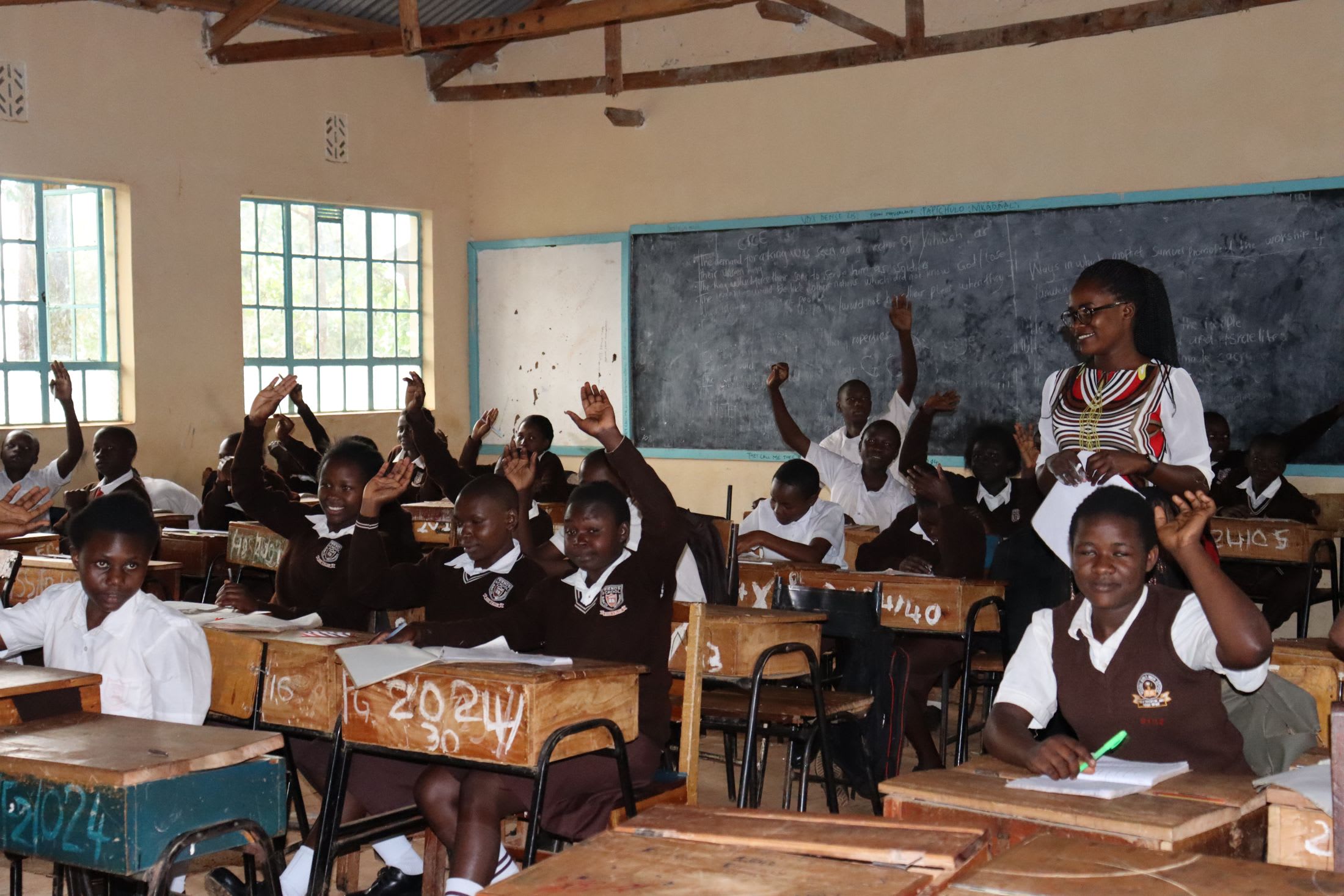The Gamoi Secondary School has 312 students and 25 staff but lacks one critical element for success: accessible, clean water.

They have a protected dug well and small plastic rain tanks on the school campus, but they cannot provide sufficient water to keep up with the demands of the large school population. The well is not deep enough and suffers from seasonality, drying up for parts of the year. The rain tanks cannot hold enough water on their own.

The school's dug well.
Their other option is to collect water from a cement rain tank that we installed at a nearby primary school in 2023. The rain tank has relieved the primary school's water concerns and brought water closer to the secondary school students, but it is not large enough to provide sufficient water for both schools long term.

Students collect water from the primary school rain tank.
"During the dry seasons, there is insufficient or no water available for school programs, including student and teacher attendance. Inadequate water also compromises [the school's] cleanliness and sanitation," shared Field Officer Joel Otuya.
Joseph, a 16-year-old student at Gavudunyi, faces the school's water crisis daily. He feels frustrated about constantly searching for water to quench his thirst and practice basic hygiene.

Joseph.
"Because of the large number of students attending the school, we crowd at the waterpoint. We sometimes have to wait a long time in line during the dry seasons since the water pressure is sometimes very low. The water pressure from the taps is affected during dry seasons because the water levels in the dug well and tank drop. I feel horrible since I don't have enough water for both my intake and personal hygiene," said Joseph.
"When sent to fetch water, I feel awful because I spend a lot of time outside. It is incredibly tiring and demanding. We occasionally collide with primary school pupils because we interfere with their routine," Joseph continued.

Students carrying water.
The water crisis not only causes Joseph to suffer without enough water to satisfy his thirst but also causes him to miss valuable class time. But class time is exactly what Joseph needs because he dreams of becoming a doctor, and without a good education, that will be impossible.
"I'm interested in medicine and excel in the sciences. I'd like to become a surgeon in the future," said Joseph.
With water access, though, things can change for Joseph. He can pursue his dreams and enjoy some of his childhood simultaneously.
We asked him what he would do differently if he had water, and he said, "During lunch breaks, I'll read to better myself rather than waste time fetching water. Since I play football for the school, I will either work on my projects during my leisure time or go play."

Students line up for one of their meals.
Steps Toward a Solution
Our technical experts worked with the local community to identify the most effective solution to their water crisis. They decided to drill a borehole well, construct a platform for the well, and attach a hand pump.
Well
Abundant water often lies just beneath our feet. Aquifers—natural underground rivers—flow through layers of sediment and rock, offering a constant supply of safe water. A borehole well is drilled deep into the earth to access this naturally filtered and protected water. We penetrate meters, sometimes even hundreds of meters, of soil, silt, rock, and more to reach the water underground. Once found, we construct a platform for the well and attach a hand pump. The community gains a safe, enclosed water source capable of providing approximately five gallons of water per minute. Learn more here!
Handwashing Stations
Alongside each water source, we install two gravity-fed handwashing stations, enabling everyone at the school to wash their hands. Handwashing is crucial for preventing water-related illnesses within the school and community. Student “health clubs” maintain the stations, fill them with water, and supply them with soap, which we often teach them how to make.
Latrines
We will construct two Ventilated Improved Pit (VIP) latrine blocks designed to prevent fecal disease transmission. Each latrine features a cement floor, making it easy to use and clean regularly. Three stalls will serve the girls, and three will serve the boys.
School Education & Ownership
Hygiene and sanitation training are integral to our water projects. Training is tailored to each school's specific needs and includes key topics such as proper water handling, improved hygiene practices, disease transmission prevention, and care of the new water point.
To ensure a lasting impact, we support forming a student health club composed of elected student representatives and a teacher. These clubs promote hygiene practices schoolwide and keep handwashing stations well-stocked. This student-led model encourages a sense of ownership and responsibility.
Safe water and improved hygiene habits foster a healthier future for everyone in the school and the surrounding community.

 Borehole Well and Hand Pump
Borehole Well and Hand Pump
 Rehabilitation Project
Rehabilitation Project


















